Effective prepping is all about planning ahead, stocking up, and getting yourself set up for self-sufficiency. Yet even the most experienced preppers, survivalists, and experts often look back wishing they had stepped up their efforts sooner on certain elements of their preparedness strategy.
I openly admit that some of the following things are mistakes I made early on or fumbles I saw some of my prepared-mindedness friends and family members make.
Not Prioritizing Physical Fitness
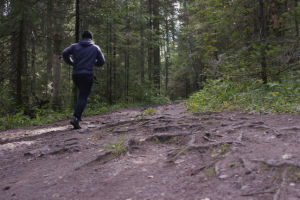 Today, I’m in amazing shape for a man my age, I can outperform most men twenty years younger than me in a foot race and in the weight room. However, ten years ago that was not the case. I let “Life Happen” I got lazy, wrapped up in work, drank a few too many beers, ate a few too many pizzas, and didn’t get out to exercise like I should.
Today, I’m in amazing shape for a man my age, I can outperform most men twenty years younger than me in a foot race and in the weight room. However, ten years ago that was not the case. I let “Life Happen” I got lazy, wrapped up in work, drank a few too many beers, ate a few too many pizzas, and didn’t get out to exercise like I should.
Today I’ll tell you that the number one mistake or weakness people struggle with on wilderness survival retreats is a lack of physical fitness. If your physical fitness is lacking, you need to get on it as fast as possible. Not only will your everyday health suffer, but you won’t have the ability to make the most out of survival opportunities that will pop up when SHTF.
Being physically fit also has a lot of value for building and maintaining a sustainable lifestyle. Tending a large garden, caring for animals, and practicing survival skills all require next-level strength and endurance.
How to Correct the Mistake
I got back into shape by cutting out junk food, and processed sugar and abstaining from alcohol. Then I started hiking with my dog at least 3 miles a day. Followed by at least 3 days a week pumping iron in the weight room.
Your minimum physical fitness goal is to be able to:
Hike vigorously and continuously for 3 miles without being spent.
Be able to do at least three pull-ups in a row.
Be able to do three sets of 10 push-ups, with only 2 minutes between sets
Be able to do three sets of 15 bodyweight squats, with only 2 minutes between sets.
Be able to do a 1-minute wall-sit and a 1-minute plank.
Being out in nature is not good just for fitness, but also a good way to practice or learn survival skills. Seeking refuge in the wilderness could be the only option to survive in a disaster situation. But surviving in the wild isn’t just about basic skills—it’s about knowing how to live off the land long-term.
That’s why I rely on this guide. This isn’t your typical survival manual; it’s a practical tool that teaches you the forgotten wisdom of our ancestors who didn’t just survive in the wild – they thrived there. So, when you need to head for the hills, make sure this handbook is in your backpack; it could be your lifeline in uncertain times.
Overlooking Water Security
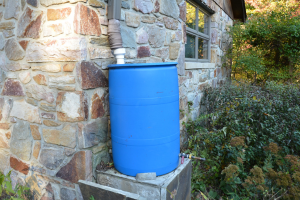 I spent much of my early life on a property with an electric well, with a backup well pump in the land of 10,000 lakes. So, I never really worried about water security, until I moved to a property in an old river sand plain with only an electric well and a water table too deep to pile drive a sand point wellhead.
I spent much of my early life on a property with an electric well, with a backup well pump in the land of 10,000 lakes. So, I never really worried about water security, until I moved to a property in an old river sand plain with only an electric well and a water table too deep to pile drive a sand point wellhead.
Of course, that first summer a massive heatwave with a multi-month drought struck. The water table the well drew from got so low that it would lose water pressure if I ran the garden irrigation system for more than half an hour. And the half-acre garden needed at least an hour of watering in the peak of summer!
This was not good for everyone else in the household who wanted to do things like shower and run the dishwasher. It’s also the sort of problem that can strike easily if you live somewhere that’s prone to regional droughts.
How to Correct the Mistake
For watering the garden and orchard, I started keeping 55-gallon barrel drums of water in a special cradle in the box of my truck. The hardware to adapt the port on a standard drum to accept a garden hose is only $20. Then I filled the barrels at night after everyone went to bed, so I could water the garden with a gravity-fed hose the next day.
I also learned you need to keep potable water on hand in the house for doing things like washing hands, dishes, and flushing the toilet. Especially if there’s a power outage!
To handle that I cleaned out a bunch of kitty litter jugs. Filled them and tucked them away in the crawlspace under the stairs. Then I also started storing two full cases of cheap bottled water from the discount-dollar store.
I also added in my backyard this device that makes almost 40 gallons of water per day out of thin air. This water generator has been a lifesaver, pulling clean, drinkable water directly from the air without relying on the grid. It’s been a seamless addition to my preparedness, giving me and my family the peace of mind that we’ll always have safe water on hand, no matter the situation.
Water is more critical than food, but many procrastinate on storing it. Don’t rely on your tap to always work. Begin with simple steps like storing bottled water, investing in filtration systems, and learning how to purify natural sources.
Growing Hybrid Vegetables
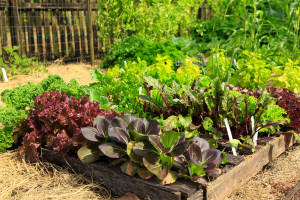 One of my biggest mistakes while developing a subsistence hobby farm, was only growing half of my vegetables from heirloom seeds. Not only did this mean that year after year I had to repurchase seeds for half of my half-acre garden. It was also limited by the gardening income stream at a time when heirloom seeds were hard to come by.
One of my biggest mistakes while developing a subsistence hobby farm, was only growing half of my vegetables from heirloom seeds. Not only did this mean that year after year I had to repurchase seeds for half of my half-acre garden. It was also limited by the gardening income stream at a time when heirloom seeds were hard to come by.
You see most of the vegetable seeds you find in stores are hybrids. They’re created in agricultural labs to give you the best possible results. However, the vegetables they produce don’t provide viable seeds. So, the next generation you have to buy in again, because last year’s seeds either don’t germinate, or give you poor results. Check out this guide on how to make a year-round self-sustaining garden and start living independently.
There are also seed exchanges and online gardening communities that will pay handsomely for heirloom seeds with a good success rate.
How to Correct the Mistake
If you want your gardening efforts to have a chance of being sustainable, you need to grow heirloom or “Open Pollinated” vegetable seeds. While they tend to be more prone to disease, and sometimes have a shorter shelf-life than “Market” or “Hybrid” varieties, they give you seeds that will breed true generation after generation.
While I couldn’t find all the heirloom varieties of the things I wanted to grow, I was eventually able to switch over to 90% heirloom or open-pollinated seed stocks. This made my garden fully sustainable, with almost zero seed cost.
Related: Pre-SHTF Mistakes That Might Get You Killed
I also was able to adapt certain types of vegetables, like tropical peppers to grow in the short Minnesota growing season. Then I would save excess seeds every year to sell at farmer’s markets and through online seed exchanges, bringing in nearly a thousand dollars a year of extra income.
Not Starting Perennials & Fruit Trees Sooner
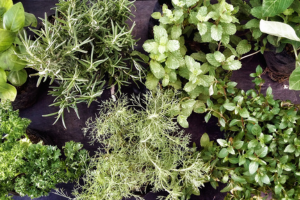 When I started developing my hobby farm property, it came with a few mature apple trees, a big butternut tree, and an old, gnarled asparagus patch.
When I started developing my hobby farm property, it came with a few mature apple trees, a big butternut tree, and an old, gnarled asparagus patch.
I thought this was good enough to start with and focused on my garden of annual vegetables.
Unfortunately, the apple trees and asparagus had been poorly maintained by the previous owner and became unproductive after a year. Then a storm blew over the mature butternut tree.
So, in year three, I had to replant young asparagus and fruit trees. Unfortunately, it takes three to five years for them to become productive. It wasn’t until year five that I started getting even a meager harvest.
Another thing I find indispensable is having seeds for plants like echinacea, chamomile, and chicory that will become invaluable as modern medicines grow scarce. If you don’t have medicinal plant seeds in your stockpile, get your own Medicinal Garden Kit from here while they are still in stock.
Inside your Medicinal Garden Kit, you’ll find 10 seed packages with high-quality, NON-GMO seeds packaged in the US, along with the details on how to plant, grow, and harvest each one.
How to Correct the Mistake
If I could go back in time, I would have pre-ordered asparagus as “Bare-Root Asparagus Starts” from a reputable supplier, that included a “Survival Guarantee.” Then planted them on day one. These root clusters are more mature and often come coated with a special fertilizer that boosts growth. Giving you a first viable harvest in year three instead of year four or five!
I would have also pre-ordered fruit and nut trees that were “Bare-Root Premium” or “Bare-Root Supreme” that the vendor guaranteed would have a minimum 5/8” diameter trunk.
These trees are much more mature than what you typically find at garden centers or low-quality online vendors. Depending on the variety, you can start to get your first harvest in as little as three years, instead of five or six.
Not Getting Chickens Immediately
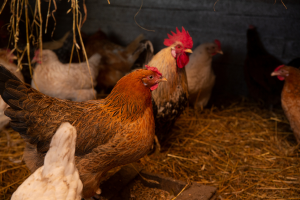 When I first bought my old hobby farm property, it came with an old, insulated horse barn. Not having horses I simply parked my boat in it and turned part of it into a workshop. Then busied myself about the other nuts and bolts components of developing the property.
When I first bought my old hobby farm property, it came with an old, insulated horse barn. Not having horses I simply parked my boat in it and turned part of it into a workshop. Then busied myself about the other nuts and bolts components of developing the property.
A year and a half later, I went to the local farm town hardware store to find they had hundreds of baby chicks in improvised brooders. Suddenly the light bulb went off in my head. I’d been so busy that I hadn’t even thought to get some chickens.
Not only do they give you eggs, but they’re also a great boon for your garden. You can build cheap, portable day-run pens to let them eat the weeds and bugs out of your garden. This also enriches the nutrient value of their eggs.
You can even mature their chicken manure and mix it with oak leaves to create powerful compost. This can be buried in your rows or raised beds
How to Correct the Mistake
I bought a half dozen of the best laying hen breeds they had and raised them up to laying age. This required converting a section of the barn into a chicken coop and creating an outdoor run pen. My family loved them so much that I bought a dozen more hens the next year.
Eventually, I had more eggs than I knew what to do with. So, I started selling them at the farmer’s market. With all the space and occasional free range in the garden, they didn’t need to be on antibiotics like commercial chickens. This meant I could sell their eggs to people with antibiotic sensitivities for triple or quadruple the price of grocery store eggs! There’s also a small secret I have to share that helped with the egg production. Because it’s not some fancy GMO food or some other gimmick, it’s this plant that will make your chickens lay more eggs than usual.
You can do something similar, without having to invest in one of those crazily over-priced premade chicken coops. With a little skill and basic hand tools, you should be able to make a chicken coop and modest run pen big enough to keep 6 chickens happy, for around $120 to $150.
Pickling and Canning without Fermenting
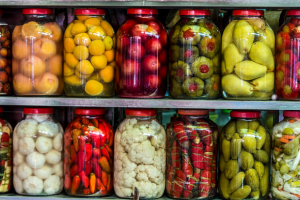 When I had a home garden and started my massive hobby farm garden, all the surplus vegetables the land gave me were either canned in syrup or pickled.
When I had a home garden and started my massive hobby farm garden, all the surplus vegetables the land gave me were either canned in syrup or pickled.
It was quick and convenient, which was handy as I was adjusting to taking on such a heavy workload.
Then I made a new friend at one of the local farm swap meets, who was fermenting his cabbage, cucumbers, and other vegetables into old-time sauerkraut and pickles. Not only is this a low-cost way to preserve these extra vegetables, but it also preserves far more of their nutrient value.
Fermented foods also have probiotic qualities to them that help the natural bacteria in your gut. They can even help boost your immune system. All of these are qualities that you lose in traditional pressure canning and hot water bath methods.
How to Correct the Mistake
In the old times, everyone fermented cabbage, cucumbers, and similar bumper crop vegetables in big, ceramic fermentation crocks. They had heavy lids that would hold the heavily salted and fermented foods below the fluid level. Then every so often you’d have to scrape off a layer of bacterial scum.
The good news is that modern materials and food science have evolved to take a lot of these inconveniences out of the food fermentation process. You can buy kits of various sizes with airlock bubblers and sanitizing systems. Small systems can be as cheap as $25 for four jars.
Larger fermentation kits can cost $50 to $75, all in with tools and gallon-size jars. You might even be able to find some old-fashioned ceramic fermentation crocks at a flea market or estate sale for $100. This will give you the ability to make batches of 5 gallons or more.
Also, look at the people who are experts in canning and long-lasting preservation methods – the Amish people. If a crisis were to happen right now, these people would probably not even notice it, because for them self-sufficiency is second nature. A good resource to find some ingenious canning methods is this book, written by an Amish person. With a guide like this one, you can have resilience and self-sufficiency at your fingertips—from their unique canning and food preservation methods to their kitchen woodstoves and the underfloor water heating system they power for free.
Final Thoughts
Of course, these are just a small subset of things I regret not doing earlier while I was developing my hobby farm and preparing for a sustainable lifestyle. Of all of them, getting physically fit and staying physically fit was the most important one. Having the ability to handle a heavy workload to maintain a sustainable life, bug-in or bug-out, is absolutely essential.
You also need to have a plan for how you’re going to establish and maintain a sustainable property. Whether it’s a full-blown hobby farm that can feed you through the year, or just setting up your backyard with enough food to get by and barter during hard times.
Proper planning and learning from the mistakes you make along the way will help refine your preparedness strategy to give you the best chances for survival.
You may also like:
Learn How to Keep Eggs Fresh for at Least a Decade (Video)
Primitive Ways To Build A Shelter
High-Risk Looter Places You Have to Stay Away From When SHTF

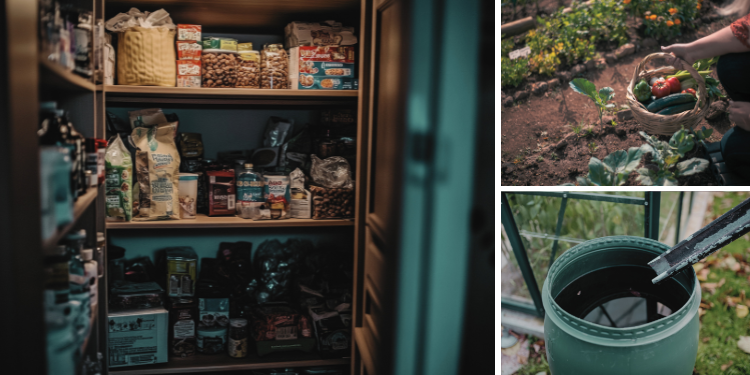

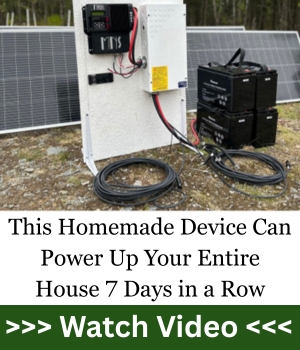

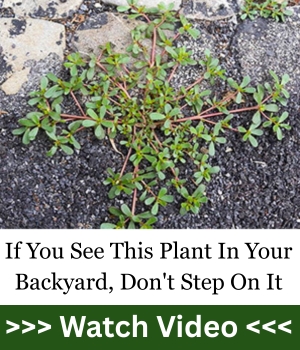

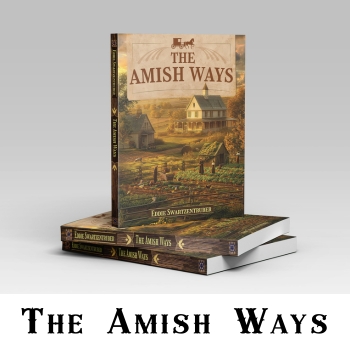

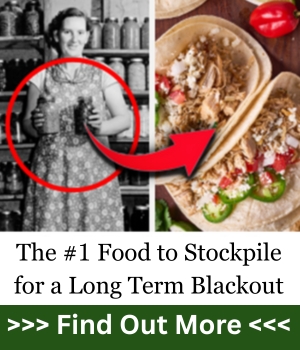

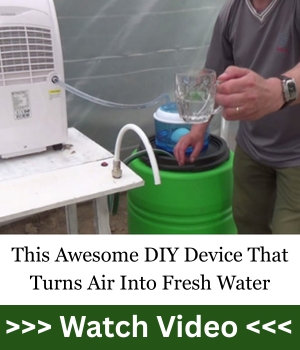




This getting fit thing has its limitations. I am nearly 70 now and have health issues. I am limited to how much I can/could do. I have no issue with getting fit. No. But I do have an issue with ignorant people who seem to think we are all young and able-bodied.
Right there with you Hillbilly… I can still hold my own at 75, just do my chores a little slower now a days… I reside at my BOL,(rurally) so I won’t be running off into the woods either, cause I damn near live in the woods… I’m considering investing in some chickens for the eggs and possibly meat, and maybe selling or giving away extra eggs… and or chicks… Live long and prosper…
Giving thumbs down won’t change my mind about people who like to preach fitness but fail to realize that those who are 70-plus and or disabled cannot do physical-demanding exercises.
Well said Hillbilly. I have injuries and a lot of surgeries. At one time I was CQB instructor. I am now a good cook and logistics guy. I can teach and the younger can be the doers. When they get back I have trauma tech capabilities and a good splop of chow ready. You can only do what you can do. Just do that well. Unless you have no use of your hands you can start a fire. You can read a map, you can cook. Many things an older, differently abled person can do. I am deaf but still stay involved. Learn something that makes you a valued part if it gets bad.
Make sure your soul is “in shape.”
I agree Chaplain Dan.
I always try to look at what might happen and what I can creatively do to overcome any obstacle. Knowledge of obstacles is always key to finding solutions in whatever situation you find yourself in.
The author took a while to realize he needed to plant fruit trees and asparagus sooner. A child of five knows this. And too store water so he could water and run a dishwasher or shower at the same time. You must have a 1000 to 10000 water tank. At .5 gallon a minute pump rate that gives you 500 gala day to use and 220 gals to store so in less than 2 months you have your 10000 gallons stored.
You need a gauge on your tank so that you know it’s full and can solve issues in a few days with the well pump if you see the tank level falling .
You also need a 125 gallon a minute 4hp pump to attach to the tank to fight a fire. That gives you 2 1.5 inch fire hose lines. Hopefully you never need it but if you do you are ready. Again common sense.
Practice at least yearly as well playing fireman.
I noticed the author never said how old he was when he realized he was out of shape.
Sure, any man in his thirties can start exercising and doing things of men, 20 years younger. Not so easy for a man in his ’70s and has had chronic back problems all his life. No one can predict the future. You could live a healthy life so that you’re healthy and your old age and end up getting hit by a bus before you get there.
Well, folks I am in my late 70’s, can I do what I did in my 40’s no, but I don’t sit on my butt all day either. There are lots of exercises we in our 70’s can do and walking is but one. I have had a lot of surgeries and have had an ostomy bag for 15 years, yet by moderate exercise I stay healthy, you have to move. After surgery the hospital staff gets you up and moving. That should tell you something. I have a friend who has been crippled from birth and sits in a wheelchair, not and electric one, but the kind with the wheels, he has great upper body strength and a handshake that could break your hand, if he wanted.
Plus, it is never too early to start eating right. Lots of fruits, veggies and I try to eat less than 50 carbs a day, it is hard to do but it will make you feel so much better. Just check out anything you eat and start adding up the carbs, it will amaze you. I drink at least 8 -16 oz glasses of water a day, including during the winter when you would think you don’t need as much, but you do. Pray for your health, pray over your food, pray for each other.
Great information.
Well said.
Go walking . if nothing more then that.
And make sure you get your water intake every day.
I agree with Joe. I’m 68 and by the grace of God am able to walk and exercise. Of course, some people have physical limitations and you do what you can. The author was just saying what he went through and what he did. Yeah he should have shared his age, but I don’t think he was downing on anyone. The article had some good points. Common sense is the rule, you take some and you leave some advise and use what is applicable to you.
Good article. I agree on all the points he raises. Regardless of our health, we should do what we can to maintain or improve our physical fitness. Maybe we can’t lift what we could when we were half the age we are now, or move as fast or nimbly, but we should still keep lifting and moving as much as we can.
I planted some fruit and nut trees, hoping they’d prosper. Most did not, so I’ve had to replant. Sometimes it’s two steps forward, three steps back.
If you do have hybrid seeds, I’d suggest planting those plus the same crop of open-pollinated or heirloom seeds. Hybrid seeds are often created for maximum yield, so you can use the hybrid yield to help with your pantry, and the open-pollinated or heirloom plants can give you a season to see how they do and collect seeds for next year. It will also give you a season of allowing the plants to get used to your area. Is also suggest that if you’re buying seeds, but from companies who have a similar climate to yours. I got some wonderful seeds from a place in a warmer zone. While they were listed as being able to grow in my zone, they struggled more than the seeds I bought from a company in a colder climate.